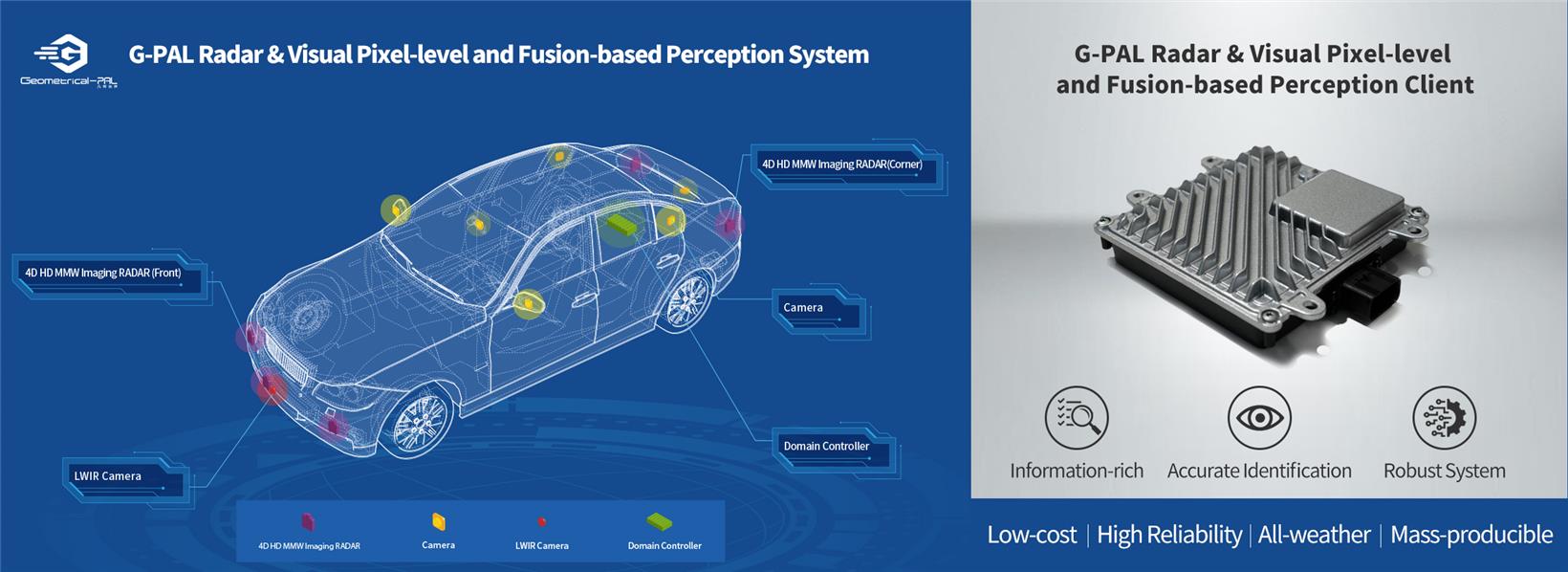Gasgoo Awards 2022 applicant: Radar & Visual pixel-level and fusion-based perception system from G-PAL
For the Gasgoo Awards 2022, Radar & Visual pixel-level and fusion-based perception system from G-PAL has applied for the Top 100 Players of China's New Automotive Supply Chain.
Product: Radar & Visual pixel-level and fusion-based perception system
Description
The G-PAL Radar & Visual pixel-level and fusion-based perception system is developed by Shanghai Geometrical Perception and Learning Co., Ltd (G-PAL). It is an all-weather, high reliability, low-cost, mass-producible, high-performance product designed to meet vehicle specification standards, with the ability to detect targets in a variety of scenarios.

Photo credit: G-PAL
The product uses the self-developed 4D MMW Imaging Radar and camera as the sensing source. It performs pixel-level deep fusion with the camera's video stream by releasing the radar's original massive signal-level information and 30,000 points per second point cloud information. In terms of deep fusion technology, the innovative heterogeneous information folding and projection technique is used to combine the signal-level radar information with the image pixel information after spatio-temporal synchronization. The pixel-level fusion detection is achieved with the point cloud information through an optimized deep convolutional neural network to obtain information-rich and highly robust structured target data.
Unique advantages
Relying on high-performance perception and fusion capability, the G-PAL Radar & Visual pixel-level fusion-based perception system can accurately detect and track complex scenes with moving and static targets. It can also improve the information richness and robustness of structured data at the perception level of the smart driving system. Moreover, it lays the foundation of perception for the smart driving technology above L2+ towards mass production.
Through pixel-level deep fusion of heterogeneous information, this product enhances the ability to accurately sense moving and static targets in complex scenes and all-weather 7/24 capability compared to a single sensor. Plus, the output of massive signal-level information from radar reduces the information missing under the inherent rules. The detection and miss detection rates of target information are greatly improved compared to target-level fusion systems, solving the confidence problem under the traditional framework.
Application
The G-PAL Radar & Visual pixel-level fusion-based perception system can be applied to all stages of autonomous driving L2-L5, with the following functions:
• Stable tracking of long-range targets and contouring of close-range targets.
• Semantic understanding based on radar signals to improve the accuracy of target classification and detection.
• Holographic perception of static targets to improve the probability of detecting Free Space.
• SLAM technology based on Radar & Visual fusion to improve the accuracy of autonomous driving localization.
Prospects
The Radar & Visual pixel-level and fusion-based perception system further enhances the perception capability compared to the traditional Radar & Visual structured data fusion solution. The system’s integrated design results in more stable performance and reduces the cost, which can bring autonomous driving closer to consumers. The number of motor vehicles in operation in China has exceeded 300 million, with new production and sales at around 30 million vehicles per year. It is expected that by 2025, 30% of models will have added autonomous driving functions, and the share in autonomous driving will exceed 70%, with very good market scale and industrialization prospects.
Gasgoo not only offers timely news and profound insight about China auto industry, but also help with business connection and expansion for suppliers and purchasers via multiple channels and methods. Buyer service:buyer-support@gasgoo.comSeller Service:seller-support@gasgoo.com







